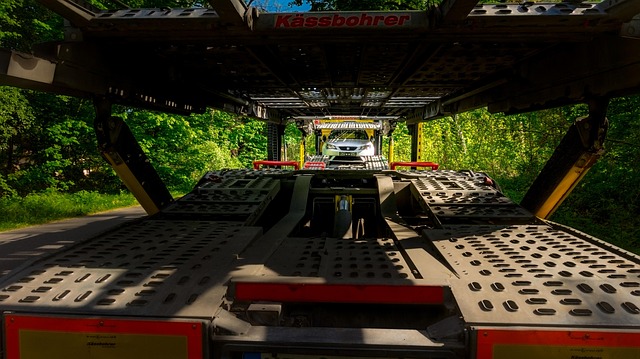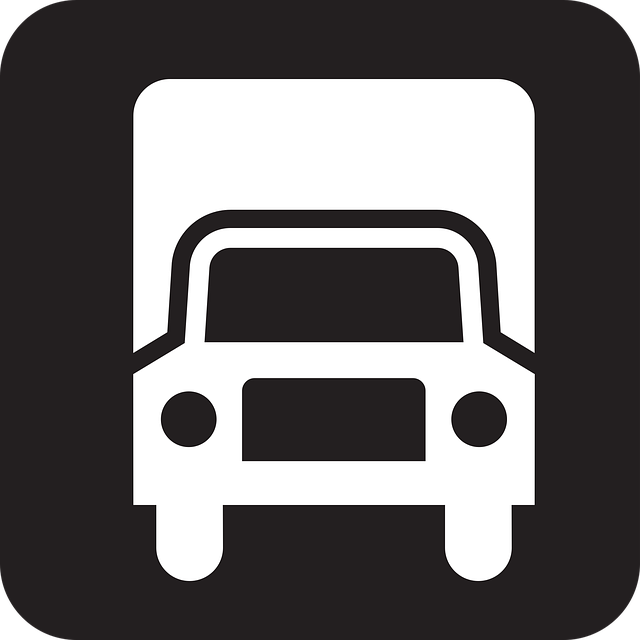Looking to register your car in California? This comprehensive guide walks you through every step, from understanding key requirements to securing your license plate. Discover the importance of a successful dmv vin verification process and gather all necessary documents for a seamless DMV visit. By following these clear instructions, you’ll be on the road in no time with a properly registered vehicle.
- Understand California Car Registration Requirements
- Gather Necessary Documents for DMV Visit
- Perform VIN Verification: Steps and Importance
- Complete Application Process at DMV Office
- Pay Registration Fees and Obtain License Plate
Understand California Car Registration Requirements

Before diving into the registration process, it’s crucial to understand California’s car registration requirements. The state Department of Motor Vehicles (DMV) mandates that all vehicles operated on public roads be properly registered and have a valid inspection certificate. This includes both new and used cars purchased within or outside the state. One essential step in the process is the DMV’s Vehicle Identification Number (VIN) verification, which ensures that your car matches the details on its registration documents.
California offers several options for vin inspection, including traditional appointments at a local DMV office and convenient mobile vin inspection services. The latter allows you to get your car checked for compliance right at your location using a reliable mobile vin verifier. This flexibility makes it easier for drivers to meet the state’s requirements, ensuring a smoother registration experience overall.
Gather Necessary Documents for DMV Visit

Before heading to the DMV, make sure you have all the essential documents and information. This includes your vehicle’s registration papers, proof of ownership (like a title or bill of sale), and identification documents like a driver’s license or state-issued ID card. It’s crucial to also have the Vehicle Identification Number (VIN) ready for verification; you can check this online through a reliable DMV VIN verification service or with a mobile vin verifier. Some agencies might require a recent vin inspection report, so it’s good to be prepared.
Additionally, gather any other relevant paperwork specific to your situation, such as insurance proof, lien releases if applicable, or documents related to previous owners. Having these ready will streamline the registration process and help avoid unnecessary delays at the DMV.
Perform VIN Verification: Steps and Importance

Before registering your car in California, it’s crucial to perform a Vehicle Identification Number (VIN) verification. This process ensures that the vehicle matches the information on its registration documents and helps prevent fraud. Start by obtaining your vehicle’s VIN from either the dashboard or the driver’s side door frame. Then, follow these simple steps:
1. Access the DMV’s Online Services: Visit the California Department of Motor Vehicles (DMV) website and navigate to their online services portal.
2. Enter the VIN: Input the unique 17-character VIN into the designated field.
3. Submit for Verification: Click the submit button, and the system will cross-reference your provided information with its records.
4. Receive Results: Once verified, you’ll be notified of the outcome, indicating whether the vehicle is eligible for registration or if any discrepancies are found. If issues arise, address them promptly to avoid registration delays.
A mobile VIN inspection or verification using a trusted mobile verifier can also streamline this process, offering convenience and time-saving benefits. This step is an integral part of ensuring a smooth car registration experience in California.
Complete Application Process at DMV Office

To complete the car registration process in California, you’ll need to visit a DMV office. Bring all necessary documents, including your vehicle’s title and proof of insurance. A key step in this process is the dmv vin verification, which ensures the vehicle’s identification number (VIN) is accurate and matches the make and model on record. This usually involves a vin inspection conducted by a DMV official to confirm the vehicle’s authenticity.
Some California residents opt for mobile vin verification or mobile vin inspection services, offering convenience by performing the VIN check at your location. However, this is not mandatory, and visiting a DMV office directly remains the traditional and reliable method to ensure a smooth registration process.
Pay Registration Fees and Obtain License Plate

After completing the registration application and providing all necessary documents, it’s time to settle the fees associated with registering your vehicle in California. The process involves paying the base registration fee as well as other applicable charges, which can vary based on your vehicle type and emissions standards. You can opt for payment methods like cash, credit card, or check at most DMV locations. Once your payment is processed, you’ll receive official confirmation of your vehicle’s registration.
As part of the registration process, you’ll need to obtain license plates for your car. In California, these plates are assigned based on your vehicle’s unique Vehicle Identification Number (VIN). You can choose between standard and specialized license plates, each with its own design and cost. For a quick and convenient option, many Californians opt for mobile VIN verification services that allow you to register and obtain plates without visiting a DMV office. This method includes a vin inspection to ensure the vehicle’s identity and eligibility for registration.
Registering a car in California involves understanding state requirements, gathering essential documents, and completing a straightforward application process. After your DMV visit, remember to perform a DVW vin verification for accuracy, as this step is crucial for a successful registration. With all the necessary steps taken, you’ll be on the road with a valid license plate in no time.



